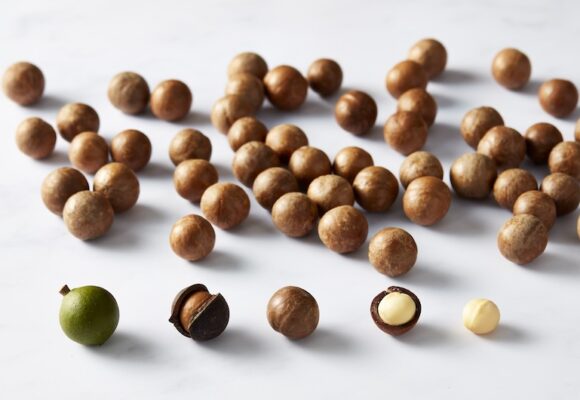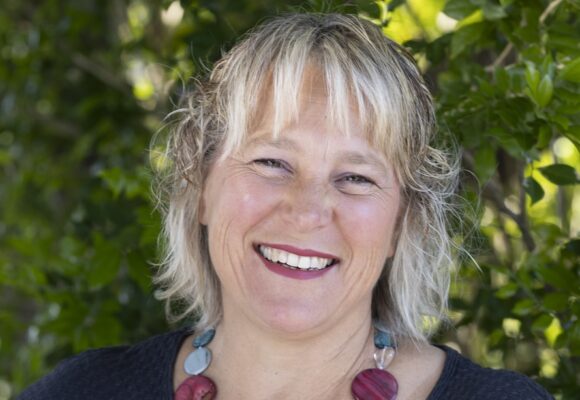Innovative thinking is one of the hallmarks of Australia’s macadamia industry, and nowhere more than in the orchard. The latest video in our Macadamia Change Makers series showcases the work of Rex Harris whose macadamia farm, Piccadilly Park, is a great example of regenerative agriculture in action.
Watch the video:
Rex, along with his family, farm manager and agronomist, have been working hard to establish a more nature-friendly environment in which to grow macadamias. They’ve created a vibrant polyculture on the farm, above and below ground, by removing alternate rows of macadamia trees and planting flowering plants in their place – and it’s paying off in more ways than the family could have imagined.

Protecting the soil
The Harris family first planted their orchard in 1990 on land that had previously been used to grow corn and potatoes. Smother grass had been established between the rows of trees as a ground cover to protect the soil from erosion during heavy rain. However, as the orchard grew and matured, they started to notice a problem.
“As the trees started to canopy over, we lost sunlight on the orchard floor,” explains Rex. “We started to lose our smother grass so there was no protection for the soil. We decided to start thinning the orchard, removing every second row. That gave us ample sunlight to re-establish ground cover and introduce seasonal cover crops to the inter-row of the orchard.”

Sunflowers are now a favourite inclusion of the summer cover crop mix. Because they grow quite tall, Rex’s orchard looks unlike any other in the area. Every second row is now a flower bed, abundant in life. “We’ve converted our orchard from a monoculture to a polyculture. So now, the orchard is alive with beneficial insects and butterflies, and we’re seeing a lot more bird life in the orchard too.”
Using regenerative principles and practices
“One of the practices of regenerative agriculture is to have a live root in the ground at all times,” explains Rex. This is why the sunflowers themselves aren’t harvested as cut flowers. Instead, they are used to help build the soil.
“We roll the sunflowers down, and they become a really thick mulch bed,” he says. Then the next season’s cover crop is planted directly into the previous one. This practice helps build the soil’s organic matter which increases water holding capacity for his macadamia trees, as well as creating a more biodiverse environment.
Rather than using chemical fertilisers, the trees are fed with compost, and over 10 years, each tree will have had around a tonne of compost fed to it! This helps to build soil health and makes it another living part of the farm.

“With a ‘living soil’, amazing natural things are happening. Every time we replace the cover crop, we’re laying down the old one, and there’s tons of biomass being broken down by microbes. Then we’ve got a new crop growing, and so there’s layer upon layer upon layer of vegetation. It’s all going back into the soil. It’s rebuilding the soil.”
Loving the insects
Rex constantly tests ideas to improve the biodiversity on the farm, and while many macadamia farmers use beneficial insects to control pest species in their orchards, Rex takes this to a whole new level.

“The first time we replaced the multi-species cover crops, we learned a big lesson,” he recalls. “We replaced the whole lot in one hit. Part way through the process, I noticed swarms of insects, and I realised then we had just taken away their whole habitat.”
He’s since created permanent insectaries (meadows of constantly flowering plants) on the property. Now when cover crops are replaced, the plantings are staged to maximise habitat for beneficial insects, delivering flow-on benefits for his whole farm.

Aside from the macadamia orchard, Rex has also planted 60,000 rainforest plants over the past 20 years that are now a well-established habitat for birds. Piccadilly Park is truly a haven of biodiversity.
See Rex’s farm in action:


